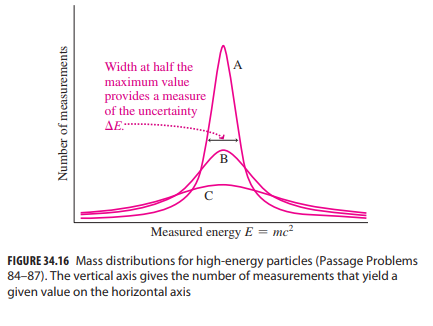Particle physicists use the energytime uncertainty relation to estimate the lifetimes of unstable particles produced in high-energy
Question:
Particle physicists use the energy–time uncertainty relation to estimate the lifetimes of unstable particles produced in high-energy particle accelerators (Chapter 39). Some particles have lifetimes of 10-24 s and shorter—impossible to measure directly. However, physicists can measure particle masses, and they do so for many instances of the same particle to get a distribution of masses. By Einstein’s E = mc2 , that corresponds to a distribution of energies (Fig. 34.16). Measuring the distribution’s width at half its peak (see Fig. 34.16) gives an estimate of the energy uncertainty, and the corresponding ∆t from inequality 34.16 provides the particle’s lifetime.

For a particle with lifetime 10-7 s, the corresponding mass range is closest to
a. 10-44 u.
b. 10-27 u.
c. 10-17 u.
d. 1u.
Step by Step Answer:






